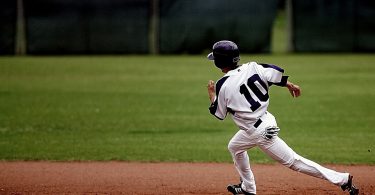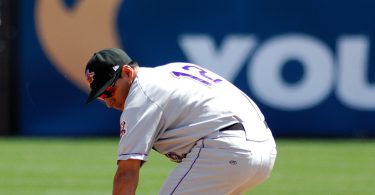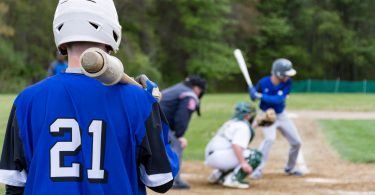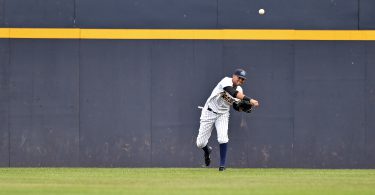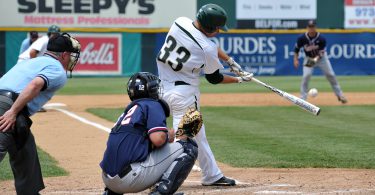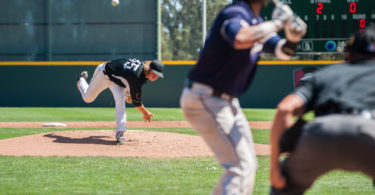The Situation:
There is a runner on second with 2 outs in the bottom of the 6th inning of a 2-2 game. There is a 1-2 count on the right-handed hitting shortstop. The right-handed pitcher has set up his wipeout slider perfectly and just about everyone on the defensive side knows it’s coming.
The Play:
The pitcher comes set, no-looks the runner at second and delivers his signature out-pitch. The slider starts over the heart of the plate, deceiving the hitter before taking a sharp left-hand turn down and out of the strike zone. The batter starts swinging for the middle fastball he picks up out of hand before realizing he is out front of the slider. He decelerates his bat with a butt-out swing just trying to make contact. He manages to put the ball in play, a weak ground ball headed towards the shortstop. The pitcher takes a few steps towards the roller but can’t get there. The shortstop comes charging in hard. The ball is just transitioning from grass to dirt when the shortstop gets to it. Knowing he will have to hurry, he attempts a barehanded play.
The Outcome:
The ball has too much pace and spin for the shortstop to handle and he can’t grab it cleanly. It tips off the shortstop’s open hand and comes to a rest behind him. He slams on the breaks and slips to a stop on the grass. He goes back for the baseball, but by the time he has changed direction and gathered the ball, he has little chance at the runner who has circled third and will score.
What Went Wrong?
Think about all the groundballs you have seen hit to shortstop in MLB games. How many of those rolling balls, without extenuating circumstances (crazy bad hop, ball hits off the base, a player, or the mound, etc.), have the shortstops bare-handed? Our guess is very, very few. The bare-handed grab, especially on the run, is an extraordinary play! It’s also very uncommon and rarely the correct play to make as a shortstop. Why? Because the bare-hand play takes away your margin for error and gives you exactly one opportunity to make a difficult play. If you bobble the ball or lose your grip on the bare-hand, the ball is on the ground. If you get a bad grip, you are unlikely to make an accurate throw. Either way, everyone is safe or worse. This may be the right call with no one in scoring position and that as the only option to get the batter. On the other hand, if you use your glove, a bobble or even last second unexpected hop can be accounted for and overcome. Your glove gives you more margin for error and a chance to recover from something unexpected. Take a look at this play by Jordy Mercer on a ball similar to the one described. This is a play he has practiced regularly and he has worked on throwing from a variety of arm angles so he can make this play without resorting to the bare-handed grab.
A great rule of thumb is if the ball is rolling fast enough so you can’t count the seams (this isn’t very fast, try it!), you should use your glove. There are of course extremely rare exceptions. For example, a situation where the game will end if the runner is safe and a bare-hand is the only chance. But let’s make sure that you are making the appropriate play the other 999 times out of 1,000.
In this particular case, using the glove is a must because of the lead runner. If the batter is safe at first and the lead runner left at third, the offense still must get a hit to score the runner and ‘earn’ the run. In this case, the shortstop has given a free 90 and a free run when it was not absolutely necessary. Most games are won and lost by making the routine play and not giving up extra bases. When it comes to a slow or medium paced ground ball, practice them routinely, think the game and show some love to the glove!


